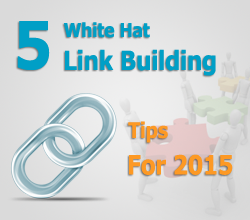 Backlinks remain one of the most critical ranking factors in Google’s algorithm. They’re like “votes of confidence” from other websites, signaling to search engines that your content is valuable, credible, and worth ranking higher in search results. However, not all backlinks are created equal. High-quality backlinks from authoritative sources can significantly boost your SEO, while spammy, low-quality links can do more harm than good.
Backlinks remain one of the most critical ranking factors in Google’s algorithm. They’re like “votes of confidence” from other websites, signaling to search engines that your content is valuable, credible, and worth ranking higher in search results. However, not all backlinks are created equal. High-quality backlinks from authoritative sources can significantly boost your SEO, while spammy, low-quality links can do more harm than good.
In this comprehensive guide, we’ll explore proven, ethical techniques to build high-quality backlinks naturally. This isn’t about quick fixes or black-hat tactics—instead, we’ll focus on sustainable strategies that strengthen your website’s authority over time.
Why High-Quality Backlinks Matter
Backlinks aren’t just about quantity. A single link from a reputable, high-authority website can be more powerful than hundreds of low-quality links. Here’s why they’re crucial:
- Improve Search Rankings: Backlinks help search engines discover your pages and rank them higher.
- Drive Referral Traffic: Links from popular websites can bring in a steady stream of targeted visitors.
- Build Credibility: Being linked to by authoritative sites boosts your brand’s trustworthiness.
Understanding What Makes a Backlink High-Quality
Before diving into strategies, it’s essential to understand the characteristics of a valuable backlink:
- Relevance: The linking site’s content should be related to your niche.
- Authority: Links from sites with high Domain Authority (DA) or Domain Rating (DR) carry more weight.
- Dofollow Status: While nofollow links have value, dofollow links pass SEO “link juice.”
- Placement: Links placed within the body of content are more valuable than those in footers or sidebars.
- Anchor Text: Descriptive anchor text helps search engines understand the linked content’s topic.
Proven Techniques for Building High-Quality Backlinks
1. Create Link-Worthy Content (The Foundation)
No backlink strategy works without great content. Your goal is to create resources so valuable that others naturally want to link to them.
Types of Link-Worthy Content:
- Ultimate Guides: In-depth, comprehensive articles on specific topics.
- Original Research: Data-driven studies, surveys, or reports that others cite as references.
- Infographics: Visual content that simplifies complex information, making it highly shareable.
- Case Studies: Real-world examples showcasing your success stories.
Example: A marketing blog publishes a study on “The Impact of Social Media on SEO in 2025″—it becomes a go-to reference for other content creators.
2. Guest Posting with a Strategic Approach
Guest blogging is one of the most effective ways to build high-quality backlinks. However, the focus should be on providing value, not just acquiring links.
Steps to Effective Guest Posting:
- Identify Relevant Websites: Target authoritative blogs in your niche.
- Personalize Your Outreach: Craft genuine, thoughtful pitches rather than generic templates.
- Deliver High-Quality Content: Write articles that educate, inspire, or solve problems for the target audience.
- Include Natural Backlinks: Add links to your content only where it adds real value.
Advice: Focus on sites with engaged audiences and strict editorial guidelines. If it’s easy to get published, the backlink might not hold much value.
3. The Skyscraper Technique
Coined by Brian Dean, the Skyscraper Technique involves finding popular content, creating something even better, and reaching out to those who linked to the original.
How It Works:
- Find high-performing content in your niche (using tools like Ahrefs or SEMrush).
- Create a superior version—longer, more detailed, updated with fresh data.
- Reach out to websites linking to the original, suggesting your improved resource.
Hint: Focus on outdated statistics or articles with missing information—that’s your opportunity to add value.
4. Build Resource Page Links
Resource pages are curated lists of helpful content on specific topics. Getting listed on these pages can provide valuable backlinks.
Steps:
- Search for resource pages using queries like:
“intitle:resources inurl:resources [your topic]”
- Identify pages where your content fits.
- Reach out with a polite email explaining why your resource adds value.
5. Broken Link Building
This technique involves finding broken links on relevant websites and suggesting your content as a replacement.
How to Do It:
- Use tools like Check My Links or Ahrefs to find broken links on industry websites.
- Create (or have) relevant content that fits as a replacement.
- Contact the site owner, kindly pointing out the broken link and suggesting your content.
Example: “Hi [Name], I noticed a broken link on your resources page about SEO tools. I recently published a guide that could be a great replacement—here’s the link if you’d like to check it out.”
6. HARO (Help a Reporter Out)
HARO connects journalists with expert sources. Responding to relevant queries can earn you authoritative backlinks from news outlets and major blogs.
How It Works:
- Sign up at HARO and choose relevant categories.
- Monitor queries from journalists looking for expert quotes.
- Craft concise, valuable responses to increase your chances of being featured.
7. Leverage Social Proof and Brand Mentions
Sometimes, websites mention your brand without linking back. These are easy wins.
How to Find Unlinked Mentions:
- Use Google Alerts or tools like BrandMentions to track mentions of your brand.
- Reach out to the author, thanking them and politely requesting a backlink.
Common Mistakes to Avoid in Link Building
- Buying Links: This violates Google’s guidelines and can result in penalties.
- Over-Optimizing Anchor Text: Using exact-match keywords excessively can look unnatural.
- Ignoring Relevance: A backlink from an unrelated site adds little value and can harm SEO.
- Quantity Over Quality: Focus on building a few high-quality links rather than hundreds of low-value ones.
Real-World Example: Link Building in Action
A SaaS company struggled to rank for competitive keywords. They implemented a link-building strategy focused on:
- Guest posting on industry blogs.
- Creating data-driven content that earned natural backlinks.
- Using HARO to get featured in tech publications.
Results? A 60% increase in organic traffic and top 5 rankings for several competitive keywords within six months.
Expert Tips for Sustainable Link Building
- Consistency is Key: Link building isn’t a one-time task. Regular outreach keeps your backlink profile growing.
- Focus on Relationships: Building genuine relationships with bloggers, journalists, and industry influencers leads to long-term opportunities.
- Track Your Progress: Use SEO tools to monitor new backlinks, referral traffic, and keyword rankings.
Conclusion
Building high-quality backlinks naturally takes time, effort, and a focus on providing real value. The most sustainable strategies involve creating exceptional content, building relationships, and genuinely contributing to your industry. By following the techniques outlined here, you’ll not only improve your SEO but also establish your brand as a trusted authority in your niche.
Remember, backlinks are a reflection of your content’s value. Focus on quality over quantity, and the rankings will follow.












